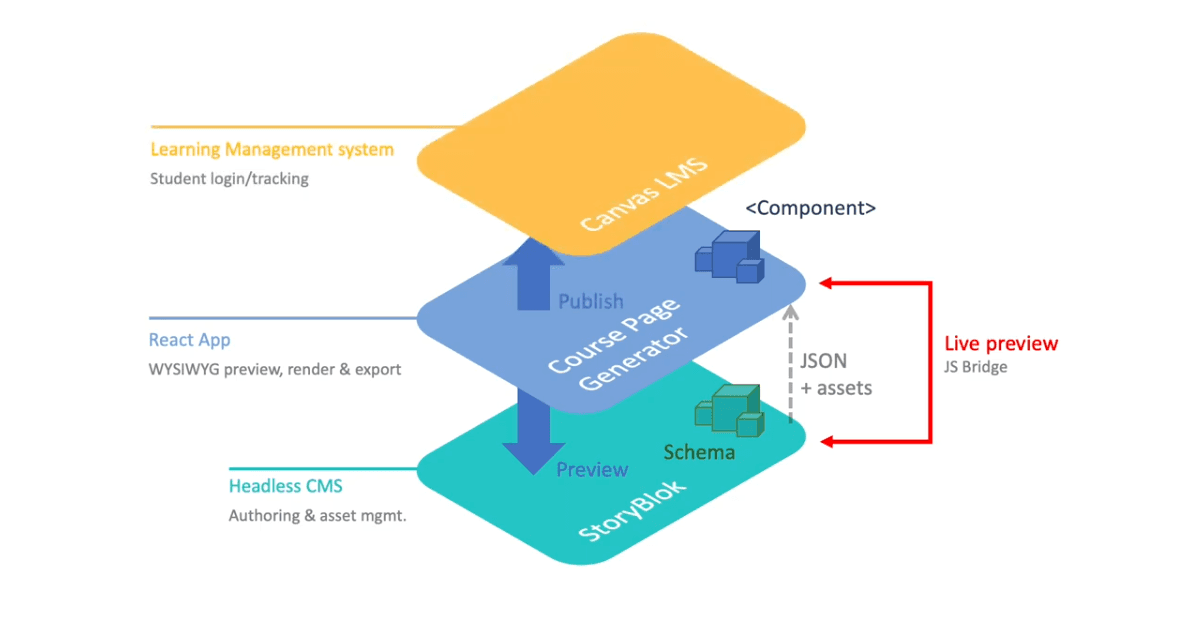iheed's Digital Learning Ecosystem – Advanced Authoring & Medical Simulations
As Head of Engineering at iheed, our founding team member led the development of a global medical education platform serving over 10,000 healthcare professionals. Our work centred on two flagship innovations: a bespoke, headless eLearning authoring system and a suite of award-winning, browser-based medical simulations. This ecosystem was engineered to solve critical challenges in medical education, dramatically reducing content creation costs while providing medical professionals with immersive, high-fidelity training experiences.
Project Role: Head of Engineering
Our team steered the technical vision and execution for the entire platform, from architecture to delivery. Our role encompassed:
Technical Vision & Leadership
Led the development and scaling of the global medical education platform across distributed teams.
Architectural Design
Architected the component-based, headless authoring system and the engine for the medical simulation games. This innovative architecture reduced custom authoring costs by 75% and accelerated course development by 60%.
Product Innovation
Spearheaded the creation of unique authoring workflows and complex simulation mechanics, including conversational branching systems and interactive 3D models.
Standards & Compliance
Ensured all educational content and platforms adhered to key industry standards, including SCORM, LTI, Common Cartridge, and WCAG accessibility.
Key Innovations
The platform's success was driven by two core, interconnected projects that set a new standard for digital medical education.
1. The Headless Authoring System

We engineered a bespoke authoring system to empower non-technical subject matter experts, instructional designers, and graphic designers. This system moved beyond the restrictions of traditional e-learning tools by combining the flexibility of a headless CMS (Storyblok) with a custom React front-end application.
Flexible, Component-Based Architecture
Courseware pages are constructed from a series of blocks, with each block mapping to a React component. This allows for maximum flexibility and reusability.
Live WYSIWYG Authoring
The system provides a live preview, allowing the authoring team to see a real-time, WYSIWYG version of the content as they build it.
Scalable & Standards-Compliant
This setup offloads backend and database concerns to the headless CMS provider and is built to ensure compliance with critical educational standards like SCORM and Common Cartridge.
2. Immersive Medical Simulations & Games
We designed and built a suite of over 30 realistic clinical patient scenarios to allow medical professionals to apply reasoning skills and solidify their learning in a safe, repeatable environment.
Realistic Clinical Scenarios
The flagship Emergency Medicine Simulation Game challenges students to diagnose a patient by moving through a series of “Gateways”: Initial Assessment, History, Examination, Tests, Treatment, and Disposition.
Interactive Diagnostics & Branching Logic
The simulations feature deep interactivity, including multi-layered human body models with explorable hotspots, a searchable drug and diagnosis database with fuzzy search, and complex, branching patient conversations.
Performance Analytics & Mastery Learning
The simulation engine reports scores back to the Learning Management System (LMS), allowing tutors to monitor student performance. Students receive detailed feedback and can replay scenarios to achieve mastery.
Technical Architecture & Stack
The platform was built using a robust stack designed for scalability and seamless integration within a learning environment.
Frontend & Content
- React.js
- Headless CMS (Storyblok)
- JavaScript (XML branching logic interpreter)
- draw.io
- Articulate Storyline
Integration & Standards
- SCORM
- LTI
- Common Cartridge
- Canvas LMS Integration
- Custom Drug & Diagnosis Database